Madsaki: All Day I Dream About Sunsex
We catch up with Japanese artist Madsaki to chat about various topics, including his recent gallery show, All Day I Dream About Sunsex, and increased role in the world of creative creations.
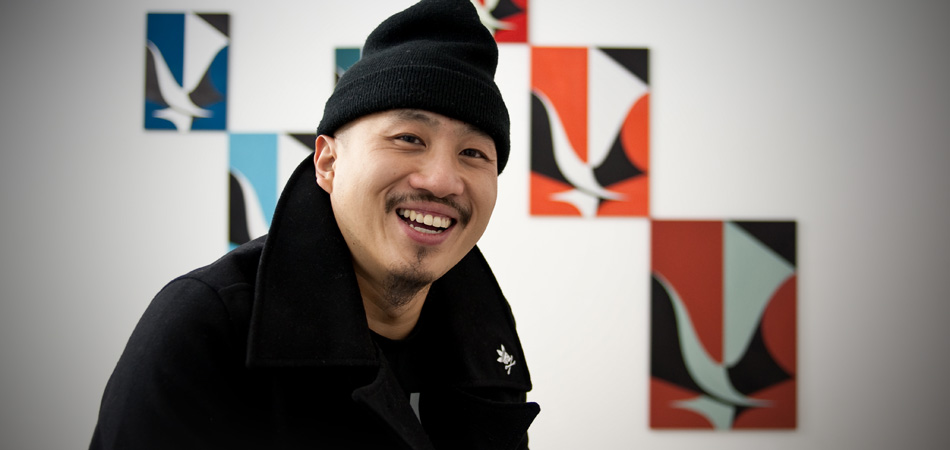
Having experienced success on multiple fronts, Japanese artist Madsaki continues his emergence in the world of art and cycling with a unique approach to both mediums. Amongst many projects, Madsaki has contributed a great deal to product collaborations, most notably working on a pair of fixie-friendly adidas Originals Samba sneakers, which trace back to his roots as a bike messenger in New York City. We catch up with Madsaki to chat about various topics, including his recent gallery show, All Day I Dream About Sunsex, and increased role in the world of creative creations.
Interview: Jey Perie
Photography: James Lisle
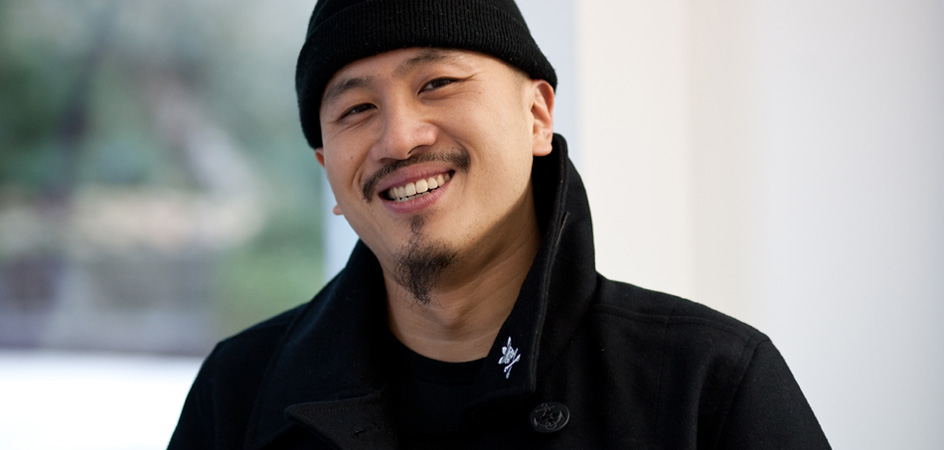
First of all, thank you for your time Madsaki. Could you introduce yourself for the readers that don’t know you yet?
My name is Madsaki and I’m an artist. I was born in Osaka, Japan, then I moved to the States in 1980. I grew up in Jersey and then moved to New York City in 1990… stayed there all the way until 2004, when I came back to Japan.
What was your background before becoming well-known for your art?
Well, I went to Parsons to study art but you know, art school doesn’t really lead anywhere for most students. I learned a lot about the industry at Parsons, enough to know that I didn’t want to be a part of it. After graduation, I didn’t do anything constructive for like 10 years, just traveling and hanging out with friends. Doing so made my brain and mental state rot in a sense, so I decided to make a move within my first, and early, passion and I became a bike messenger in New York.
How has traveling around the globe influenced you as a person?
Just being in New York to start with is a daily journey. The mix of cultures and crazy people is definitely an experience. I also took several trips to Europe, Asia and Brazil. Traveling in general opens you as a person and makes you think and question things in ways you’d never come across while staying in your own local place.
Is there a place where you’ve been that you love the most?
Definitely Brazil. They don’t speak any English or Japanese and I don’t speak a word of Portuguese but we’ve definitely connected on a different level. I’ve been to Rio, the northern part of Brazil and the Amazon, and I fell in love with every single place that I’ve visited there.
So you’ve been involved on various different projects with adidas over the past 3 years. How did that collaboration materialize?
There is no special deal with adidas. They’re just behind me and support me as an artist. They’ve been very cool and open-minded with me and I really appreciate that. For example, my current exhibition is called “All Day I Dream About Sunsex”. When I told them about the idea, they were like “Okay, let’s do it”. I was surprised but happy at the same time to have that much freedom to express my creativity.
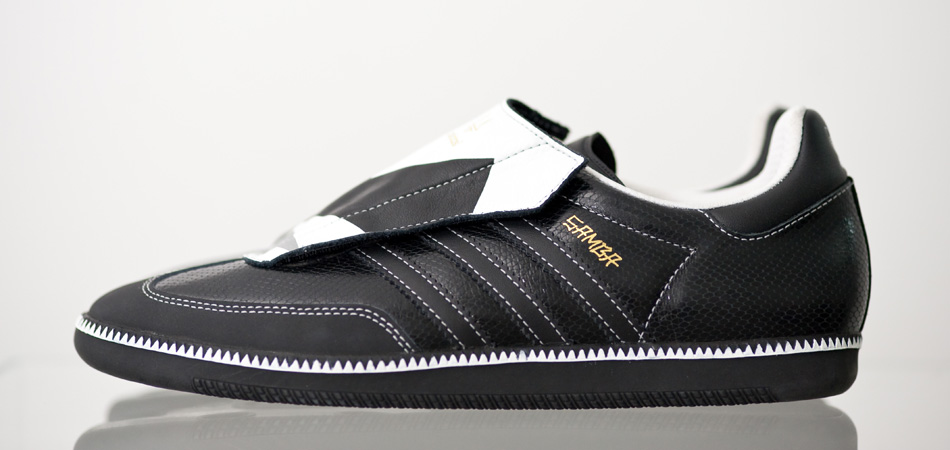
You’ve done exhibitions but also product design for adidas, culminating in the recently released Madsaki x adidas Samba representing Tokyo in the Five-Two 3 artists campaign. Could you tell us a bi more about it?
Awhile ago, I told Kazuki (Kuraishi) that I wanted to design a shoe. I told him that as a joke but one day he came back to me and asked me if I was still interested in designing a shoe for adidas. I was surprised but the first thing I said was “Really? Are you sure?”. Again, it all happened through a very simple and organic process. Regarding the shoe itself, adidas asked me what kind of shoes I was wore when I was working as a messenger. At that time, it was based on price and functionality, and for me it was the Samba, which was definitely my favorite pair of shoes. With the Five-Two 3 Artist campaign, I wanted to enjoy the opportunity to pay a tribute to my old riding shoe by taking it to the next level. Like most football/soccer shoes, the Samba is robust and fitted at the same time, definitely a classic for all the riders around.
How did you and Kazuki meet?
We actually met in Hong Kong around three years ago, though Edison Chen. We’ve been friends and working together ever since.
How does designing on a canvas and painting differ from designing a product?
Same approach. To me the shoe is a canvas. The only difference is a shoe is functional, you have to be able to wear them everyday. The other interesting aspect of designing on a shoe is the multi-angles that you have to consider.
Your latest exhibition “All Day I Dream About Sunsex” was held in Tokyo. What was the meaning behind the title?
I have two different styles, Sunsex and Crack. Crack is mostly commercial. I wanted to separate the “Serious Art” and the “Pop Art.” Sunsex, that’s my approach to noble art in a more traditional way. Ironically, people like my Crack art better.
What inspired you for this particular Sunsex exhibition?
As a Japanese being raised in the States, my relation to Japanese culture and traditional art has always been very intense, definitely more intense than most of the Japanese kids raised in Japan. Being educated in the States gave me that proper distance to appreciate my own art and culture in a deeper way. “All Day I Dream About Sunsex” has been influenced by my vision and approach to Japanese fine arts and culture.
Do you sometimes feel like a foreigner in your own country?
Haha, everyday I feel like a tourist here. I always feel isolated.
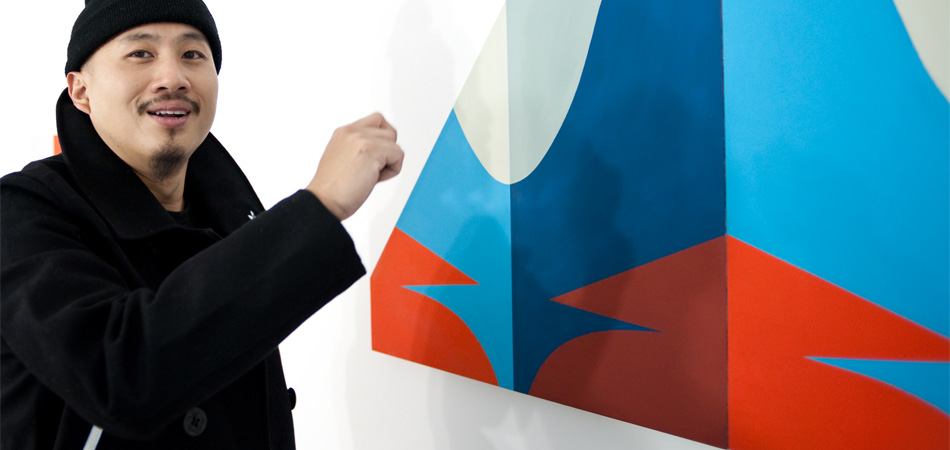
But it’s exciting in a way right? It gives you a fresh eye on every single aspect of Tokyo’s daily life. Are you still very connected to the New York art scene?
I never felt that I belonged to a scene or group of artists. I’m an artist, I have artist friends, but nothing really scene-like.
How did you get into riding?
I learned how to ride a bike in Osaka when I was two. My love for cycling has never faded ever since. Back then I understood that my bike could be a way to escape bad situations that I encountered with my older classmates. When I was a bit older my dream was to enter the Tour de France but I started “smoking” and it affected my performance, haha.
But ironically speaking, there is probably more drug abuse in the Tour de France now than in the art scene in general…haha. You were a messenger in New York City for three years, tell me more about that particular lifestyle.
It was the best time of my life. I wouldn’t want to do it again now but at that time it definitely the single best thing I could do with my life. Carrying 20 kgs (approximately 44 lbs) on your back, riding amongst cars, taxis, and pedestrians, you never know when you are going to die. In a way the sensation is very similar to surfing. New York City is the Waikiki beach of fixed-gear cycling.
Does art and riding draw any parallels to each other? Or similarities?
Totally. Riding a bike in the traffic and holding a paintbrush is the same thing. You have to master every curve and movement to reach the most accurate result. A little bit like a samurai and his sword. Madsaki the rider and Madsaki the artist is definitely the same person.
How does it feel to ride a bike in Tokyo?
When I came back five years ago I was scared to ride my bike around Tokyo. It literally took me one year to adjust myself to the traffic here. Five years ago there were almost no bikes riding through the traffic and the car drivers weren’t sure of how to react to us.
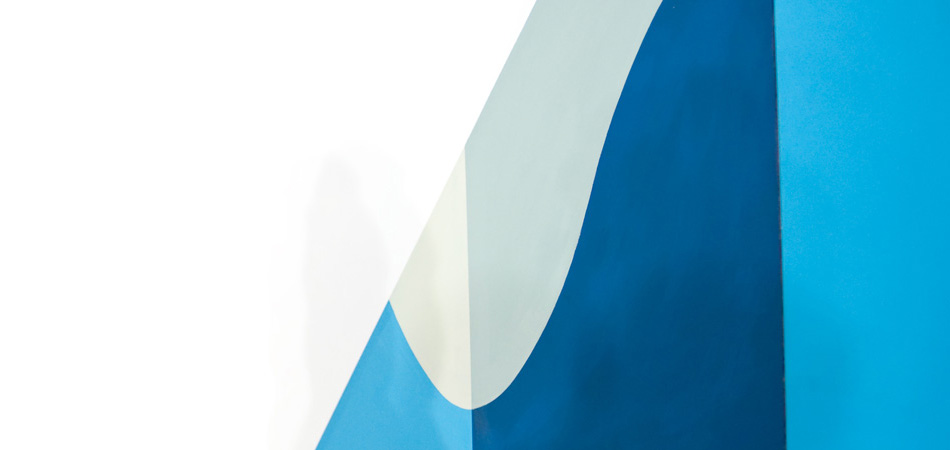
What do you feel about the fixed-gear trend amongst the fashion kids and Harajuku scene?
Well it doesn’t bother me. A trend is a trend. But I don’t think that it’s a bad trend that most of the youngsters are now using bikes to commute around the city.
Do you feel integrated within the Tokyo fixed-gear community?
Well some people think of me as one of the originators of the fixed-gear movement in Tokyo. But the first two years after I came back to Tokyo I got a lot of hate from many bicycle-heads who couldn’t understand why a New Yorker like myself would come to Tokyo and start riding and bringing to the scene those illegal bikes. So now that it became a trend most of the people see me as a pioneer and all the hate kind of faded out.
Any projects for 2010?
Yes. I would like to bring my art abroad and showcase Sunsex in a different country maybe in the US and New York of course. Sometimes I feel like my art is misunderstood by the Japanese audience so I would like to take it overseas to see how different cultures approach my art.
Anything you would like to say to our readers?
Thank you very much for the opportunity!
